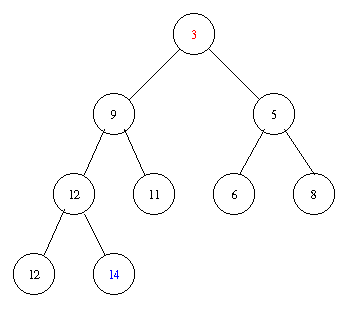

Removing the minimal element takes the following steps.
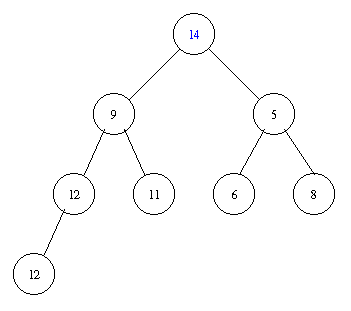
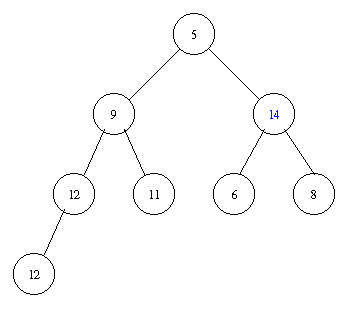
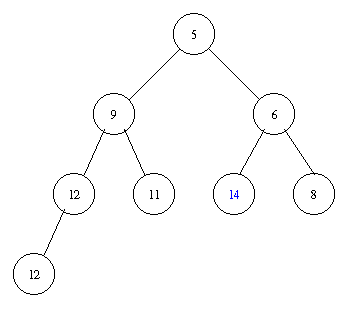
Inserting an element with key 8 takes the following steps.
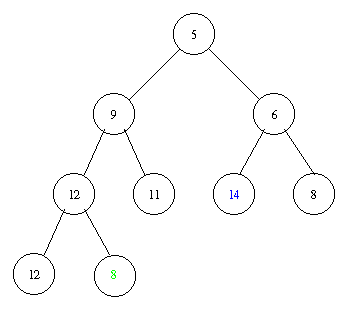
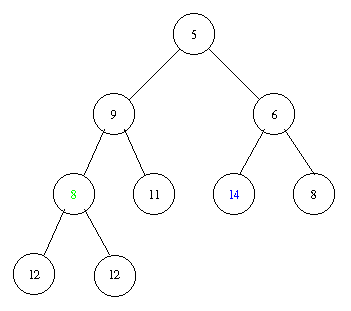
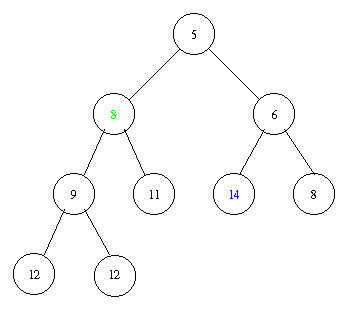
Implementation of a priority queue with a heap in pseudocode: PostScript and PDF
HeapPriorityQueue
PriorityQueueFullException
InPlaceHeapSorter
/**
Returns the minimum of the specified matrix.
The specified matrix is assumed to have the same number of rows as columns.
@param matrix a two-dimensional array of integers.
@return the minimum of the specified matrix.
*/
public static Integer minimum(Integer[][] matrix)
{
final int DIMENSION = matrix.length;
PriorityQueue minQueue = new ?PriorityQueue(new IntegerComparator());
for (int r = 0; r < DIMENSION; r++)
{
PriorityQueue rowQueue = new ?PriorityQueue(new IntegerComparator());
for (int c = 0; c < DIMENSION; c++)
{
rowQueue.insertItem(new Item(matrix[r][c], matrix[r][c]));
}
Object element = rowQueue.removeMin();
minQueue.insertItem(new Item(element, element));
}
return minQueue.removeMin();
}
The priority queues minQueue and rowQueue can be implemented
either by a sorted sequence, an unsorted sequence or a heap. Which choice
for these priority queues gives rise to the most efficient algorithm
(the algorithm with the best worst case running time)? What is the worst
case running time for those choices?